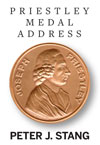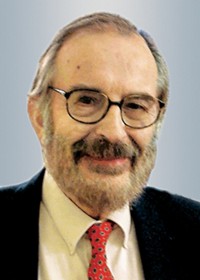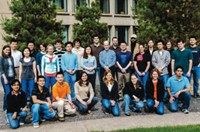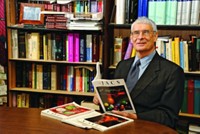Advertisement
Grab your lab coat. Let's get started
Welcome!
Welcome!
Create an account below to get 6 C&EN articles per month, receive newsletters and more - all free.
It seems this is your first time logging in online. Please enter the following information to continue.
As an ACS member you automatically get access to this site. All we need is few more details to create your reading experience.
Not you? Sign in with a different account.
Not you? Sign in with a different account.
ERROR 1
ERROR 1
ERROR 2
ERROR 2
ERROR 2
ERROR 2
ERROR 2
Password and Confirm password must match.
If you have an ACS member number, please enter it here so we can link this account to your membership. (optional)
ERROR 2
ACS values your privacy. By submitting your information, you are gaining access to C&EN and subscribing to our weekly newsletter. We use the information you provide to make your reading experience better, and we will never sell your data to third party members.
Policy
Fifty Years Of Fun With Chemistry
April 8, 2013
| A version of this story appeared in
Volume 91, Issue 14

I am immensely honored, humbled, and grateful to receive the Priestley Medal and be in the company of the previous 76 distinguished recipients with significant unique contributions to chemistry. It is a special privilege to be listed alongside the late Henry Eyring and Robert W. Parry, my former colleagues at the University of Utah, as well as several past editors of the Journal of the American Chemical Society. That list of editors includes my immediate predecessor, Allen J. Bard, as well as Arthur B. Lamb, the sixth editor of JACS from 1918 to 1950, who was the longest-serving editor and is also the editor who introduced peer review as we know it. Of course, I must also mention Linus Pauling, who received the Priestley Medal in 1984. Although he was not an editor, he was an outstanding associate editor of JACS for a 10-year period, from 1934 to 1943.
Before I tell you about my life in chemistry for more than five decades, I would like to congratulate each and every one of my fellow 2013 ACS national awardees. I also want to express my gratitude to my family, especially my wife, Christine, for their unconditional support while I was having all the fun with chemistry. Furthermore, I am most grateful to the more than 100 postdoctoral fellows and graduate and undergraduate students to date whose dedication and research accomplishments made this award possible. My sincere thanks also go to my colleagues at Utah for providing an incredibly collegial and supportive environment for my 44 years of independent career in the chemistry department.
I am German by birth, Hungarian by upbringing, and a proud American by choice. I was born in Germany to a German mother in 1941 in the midst of the Second World War. But because my father was Hungarian, and at the outset of the war Hungary was a safer place to be, my family moved to Hungary before I was one year old.


I was first exposed to chemistry in the sixth and eighth grades in Hungary as part of general science courses. That prepared me well for a rather rigorous general chemistry course as a freshman in gymnasium (high school) in Hungary. Chemistry not only appealed to me, but I was also able to set up my own laboratory of experiments at home. In the 1950s in Hungary, it was possible, even for a young teenager, to buy at the local drugstore common chemicals like hydrochloric acid, sulfuric acid, etcetera. So I was able to experiment on my own and made things like gunpowder, which of course appealed to me as a young boy. By my second year in high school, I was pretty sure I was going to be an engineer or scientist, likely a chemist.
However, my high school studies in Hungary were interrupted by the Hungarian uprising against the Soviet occupation that started on Oct. 23, 1956. After a few days of heady freedom, the revolution was crushed by the entrance into Hungary of three additional Soviet divisions in early November. On Nov. 19, my parents and two sisters and I decided to leave Hungary and after three days of traveling, we arrived at a refugee camp in Austria. My mother, who had siblings in Germany, would have preferred to stay in Germany, but after extensive family discussions we decided that, if possible, our first choice would be the United States, followed by Canada and Australia.
Fortunately, on Nov. 8, 1956, President Eisenhower signed an executive order facilitating the admission of 5,000 Hungarian refugees to the U.S. This order was later expanded to 30,000, and our family was one of the first to be processed. By mid-December 1956 we arrived at Camp Kilmer, a U.S. Army camp in New Brunswick, N.J. As my father had a nephew in Chicago who was willing to sponsor us, by early January 1957 we settled in Chicago. So in the short space of just two months, I went from a small town in a small Central European country to a major city in the U.S.
However, although I was fluent in Hungarian and German, I did not speak English. Nevertheless, my parents were eager that my younger sister and I continue our interrupted education as soon as possible. My father found and enrolled me in the nearest neighborhood high school, DePaul Academy, which happened to be a parochial all-boys high school on the Near North Side of Chicago. In just three months, I went from a first-semester sophomore in gymnasium in Hungary to a second-semester sophomore in high school in Chicago. Fortunately, DePaul Academy had excellent classes in mathematics and the sciences, including chemistry. At the end of both my sophomore year and the first semester of my junior year, I was near or at the top of my classes in math and science. But due to limited understanding of and ability to speak English, I failed American History and English.
To try to find out what was going on, the school administrators decided to give me an I.Q. test. I do not remember being told that this test was time-limited, nor had I ever seen a multiple choice exam before as they did not exist in Hungary in the 1950s. My I.Q. turned out to be 78, not exactly stellar. This had three major impacts on me: First, I am not a great believer in standardized tests, although they may serve a purpose; second, in my 40-plus years of teaching, I have never given a multiple choice exam; and third, I never had the guts to retake an I.Q. test for fear that the 78 might actually be real. Nevertheless, despite this minor handicap and initial setbacks, I graduated in the top 10, number nine as I recall, of my high school graduating class of 1959 and in the fall entered DePaul University in Chicago.
At DePaul University, I was most fortunate to have as one of my chemistry teachers and mentors Robert C. Miller, who gave me the opportunity to do three years of undergraduate research in phosphorus chemistry that gave me a real taste of the thrill of making new, previously unknown compounds and the joy of discovery. He also encouraged me to go to graduate school. Moreover, he explained to my parents and me that not only would we not have to pay to go to graduate school but that I would be paid a reasonable wage as a teaching assistant or research associate. Miller also inspired many first-generation college graduates including me to consider and go to the very best graduate schools in chemistry. In the fall of 1963, I entered the University of California, Berkeley, where under the guidance of Andrew Streitwieser Jr. I did research on the “Kinetics and Mechanism of Boron Fluoride-Alcohol Alkylations” and obtained my Ph.D. in December 1966.
In June 1962, I became a proud naturalized U.S. citizen and thus also became eligible for National Science Foundation and National Institutes of Health fellowships and, in fact, was an NSF fellow in my last two years at Berkeley. Moreover, I had the pleasure of meeting my future wife, Christine, at UC Berkeley where she was working on her master of science degree in library science while I was working on my Ph.D. in chemistry. These were interesting times at Berkeley, with the Vietnam antiwar protests, the 1964 free speech movement, and the occupation of Sproul Hall, just to name a few of the happenings at that great university. However, with dating and working hard in the laboratory on research, I had no time, other than as a casual observer, for such activities.
Although I had not decided on an industrial versus academic career during my time at Berkeley, I was strongly leaning toward the latter and hence was interested in postdoctoral opportunities. After some thinking, research, and consultation with Streitwieser, I decided to work with Paul von R. Schleyer at Princeton University. I was awarded an NIH postdoctoral fellowship, and from January 1967 until May 1969 I was at Princeton. I found the contrast between one of the largest, best, most liberal public institutions and one of the smallest, best, rather conservative private universities very interesting.
This was the golden age of physical organic chemistry, and one of the major topics was the ongoing debate between Herbert C. Brown and Saul Winstein on the classical or nonclassical nature of the norbornyl cation. My relatively minor contribution to this debate was to investigate methoxy groups as probes for delocalized cations and their substituent effects on 2-norbornyl solvolysis rates. As it turned out, the effect of the methoxy group at various positions on the norbornyl skeleton was relatively minor on the solvolysis rates of the exo and endo 2-norbornyl tosylates. My work was therefore inconclusive on its effect on the nature of the 2-norbornyl cation, due to the positive resonance but negative inductive effect of a methoxy group in saturated carbocation systems.
However, Schleyer also encouraged me to do some independent research on my own ideas. It was in this context that I investigated the preparation of vinyl trifluoromethanesulfonates and obtained evidence for simple alkylvinyl cation intermediates. This turned out to be the first preparation of vinyl (enol) triflates, which are of significant current interest in cross-coupling reactions, and resulted in my first independent publication as a communication in JACS in 1969 (J. Am. Chem. Soc., DOI: 10.1021/ja01044a079).
It was time I started my career, and in early 1969 I accepted a position as an assistant professor of chemistry, effective July 1, at the University of Utah, where I have been ever since. I was particularly interested in Utah as it had just attracted Robert W. Parry from the University of Michigan, a distinguished inorganic chemist and founding editor of Inorganic Chemistry. In 1982, Parry would be president of ACS. Utah also attracted Cheves Walling from Columbia University, a preeminent physical organic chemist and a member of the National Academy of Sciences. Walling later became editor of JACS, serving from 1975 to 1981. Moreover, in 1968 Utah’s chemistry department had just moved into a modern, new chemistry building. Utah was a growing department on the move and in fact hired not only Parry and Walling but seven new assistant professors as well as Josef Michl, future editor of Chemical Reviews, all in a period of three to four years.
With this backdrop, I would briefly like to tell you about three aspects of my involvement in chemistry over nearly five decades: First, the changing nature of chemical research; second, just a bit about my own research; and third, my experience as a journal editor.
During my graduate studies at Berkeley, my postdoctoral work at Princeton in the 1960s, and approximately the first 20 years of my own independent research at Utah, the vast majority of chemical research was carried out by individual researchers. An academic scientist worked on a specific idea with graduate students or postdoctoral associates and likewise in industry with a couple of colleagues on a single project.
However, the rapid development in sophisticated instrumentation in mass spectrometry, nuclear magnetic spectrometry, laser spectroscopy, X-ray structure determination, and, of course, modern microscopy like AFM, STM, etcetera, combined with new insights and concepts gained over the past two dozen or so years has allowed us to tackle ever more complex and sophisticated problems and ideas. In many if not most of these cases, the complex, multifaceted nature of these problems requires collaborations and a team approach. Hence, much of contemporary, cutting-edge research involves an extensive interdisciplinary and multidisciplinary approach. A collaboration may involve colleagues from the same department or perhaps another institution or even another country.
Advertisement
As an example, my research in self-assembly, which I’ll mention next, in the past two decades has involved stimulating and productive collaborations with laser spectroscopists at the University of Michigan to investigate the photophysical properties of our ensembles, mass spectrometrists at the University of Richmond, and experts in beamline techniques in South Korea to do proper structural characterization. These collaborations have also involved experts in sophisticated computational chemistry in Dalian, China, and experts in AFM and STM in Beijing to investigate the surface deposition and properties of our self-assembled molecules.
Such a collaborative and interdisciplinary approach of course requires the ability to communicate complex topics to nonexperts and to learn new science and technology outside of one’s training and background. This is both a challenge and fun for not only the research mentor, but also his or her students, postdocs, and coworkers. In fact, as discussed in the report “Advancing Graduate Education in the Chemical Sciences,” which was commissioned by 2012 ACS president Bassam Shakhashiri, this approach is well suited and necessary to educate and train the contemporary workforce in the chemical sciences for successful academic as well as industrial careers. Such a multidisciplinary and team approach is important in modern basic research leading to new knowledge; it’s even more so in research directed toward solving important societal needs—for example, in health, security, defense, climate change, energy, and other global challenges, all of which involve chemistry. As far as I can tell, this multidisciplinary and team approach to research will only increase as time goes on.

Let me turn to my own research. For the first half of my career of independent research, I was involved in classical physical organic chemistry and the study of reactive intermediates such as vinyl cations and unsaturated carbenes, as well as alkynylphenyliodonium salts.
For about the past two decades, my research has been in the area of self-assembly. Self-assembly is the spontaneous reaction and organization of simple building units into well-defined, more complex ensembles based upon the recognition elements embedded in the building units. Nature is the supreme and consummate master of self-assembly by adroitly exploiting a multitude of noncovalent weak interactions such as hydrophobic/hydrophilic, van der Waals, π-π stacking, dipole-dipole, electrostatic, and hydrogen-bonding effects to enable countless biologic processes.
All living organisms, from the simplest to humans, depend upon molecular self-assembly. Protein folding, nucleic acid structure, ribosomes, chromosomes, and phospholipid membranes are representative examples of self-assembly in nature that are of critical importance in living organisms. The protein coats of viruses, encasing their genetic material, consist of self-assembled capsids resembling polyhedrons such as dodecahedrons and icosahedrons.

Many attempts to mimic nature’s elegant self-assembly, primarily with hydrogen bonds, were met with limited success, particularly in the formation of large, complex finite assemblies with well-defined shapes and sizes. Success was tempered by the lack of directionality of weak interactions and the necessity of precisely positioning many dozens of these interactions to obtain functional assemblies. In contrast, the use of coordination chemistry and dative metal-ligand bonds circumvents these concerns, as they are highly directional because of the geometry of the d-orbitals involved. Moreover, third-row metal-ligand interactions have bond energies in the range of 15–25 kcal/mol, much less than covalent bonds (ca. 60–120 kcal/mol) but stronger than the weak interactions of 0.5–12 kcal/mol. Hence, the kinetics of coordination bond formation may be modulated, resulting in reversible, self-repairing superstructures under thermodynamic control. Furthermore, by virtue of its higher strength, one dative metal-ligand bond can replace several hydrogen bonds in the self-assembly process. In the past two decades, we have developed and exploited the use of coordination chemistry and dative metal-ligand interactions to self-assemble a wide variety of large, nanoscale, complex two- and three-dimensional assemblies with well-defined shapes and sizes.
In the mid-1990s, we pioneered and developed a systematic, rational, and predictive methodology that has been termed “the directional bonding approach” for the design and self-assembly of nanoscale metallacycles and metallacages with predesigned shapes and sizes. The versatility of this directional bonding approach allows the same methodology employed for the formation of simple 2-D systems such as rectangles and triangles to be applied to more complex structures such as a cuboctahedron and dodecahedron. This and related methodologies have been widely used by numerous researchers worldwide to prepare a large number of diverse metallacycles and -cages of various shapes and dimensions.
Coordination-driven self-assembly represents a “bottom up” methodology for the formation of nanoscale, complex species of considerable potential significance in modern nanotechnology. To date, such coordination-driven self-assembled ensembles have found applications as “molecular flasks” for the observation of unique chemical phenomena and unusual reactions, such as supramolecular catalysts, enzyme mimics, and targeted drug delivery systems. Most recently, self-assembled ruthenium rectangles and cages have shown promising in vitro antitumor activity comparable to or better than the commercially widely used cisplatin or doxorubicin.

Finally, I would like to say a few words about being a journal editor. Since January 2002, I have had the privilege of being the 12th editor of the Journal of the American Chemical Society, which we all know as JACS. I had previously served as an associate editor for nearly 20 years. JACS was established in 1879 and is the flagship journal of the American Chemical Society. JACS publishes basic (not applied) cutting-edge research in all areas of the chemical and related sciences. An indication of the tradition of excellence and stature of JACS is that essentially every Nobel Laureate in Chemistry since about the 1950s has published some if not all of their seminal work on which the Nobel Prize was based in JACS. A further indication of the high regard for JACS by the chemical community is the fact that wherever I travel in the world, but in particular Asia, I receive exceptional hospitality. It did not take me long to figure out that this is not due to my good looks or magnetic personality or even my cutting-edge science but rather to being the editor of JACS.
I am proud of the fact that since I took over in 2002, manuscript submissions to JACS have doubled from just under 6,000 in 2001 to just over 12,000 in 2011, the last year for which we have complete data. Our acceptance rate has declined during the same period from about 45% to 26%.
It is my goal in the next couple of years to accept only the top 20% of manuscripts received. Likewise, the number of annual citations for JACS has doubled from just under 200,000 in 2001 to just over 400,000 in 2011.
For 2011, the total citations puts JACS in the company of the top half-dozen science journals, such as Nature,Science, Proceedings of the National Academy of Sciences, and Biochemistry.

All of this, of course, is the result of the effort and dedication of the “JACS Team” of 25 associate editors, the managing and assistant managing editors, the office staff, the incredibly efficient production group in Columbus, Ohio, and the leadership of the ACS Publications Division in Washington, D.C. I should add that not only have the manuscript submissions and annual citations of JACS doubled in the past decade, but as our acceptance rate has steadily declined so have the phone calls from unhappy authors whose manuscripts did not make it into JACS. Moreover, unfortunately, in many instances these phone calls have become several factors more ornery. It is, of course, my task as editor to thoughtfully and diplomatically address not only the pleasant but also the unpleasant aspects of this important position. I hope I have done so.
Allow me to illustrate dealing with issues with a couple of examples. As an associate editor of JACS in the 1980s, I handled all of Herbert Brown’s JACS manuscripts in the area of physical organic chemistry. For reasons I no longer remember, I sent one of his communications to three reviewers, rather than the more customary two. All three came back requesting minor changes and recommending acceptance. I mailed the reviews to Brown along with my letter stating that I shall be happy to accept it subject to his consideration of the reviewers’ comments. When Herb received this I immediately received a phone call from him along these lines: “Peter, does JACS have double standards?” I responded, “What do you mean, Herb?” He said, “For Nobel Laureates you have to have three reviews, two are not sufficient?” I knew Herb well, as his only child, Charles, and I overlapped in graduate school at Berkeley. So I just held the phone and let him talk, then I said, “Herb, how is Charlie doing?” We spent a pleasant five to 10 minutes talking about Charlie, Herb seemed to have forgotten why he called, and all was well.
Advertisement
When Al Bard became editor of JACS in 1982, by policy he could not handle any manuscript submitted from the University of Texas, Austin, nor could his associate editor in theoretical chemistry, who was a colleague of Bard’s at the time. Hence, I ended up handling the submissions of Michael J. S. Dewar, a preeminent theoretician and experimental physical organic chemist and colleague of Bard’s. One day I received a phone call from Michael during which he accused me of giving him the worst editorial treatment in his career. Needless to say I was surprised and upset, so as soon as our conversation ended I called Al and told him what happened. When Al found out who it was, he told me not to worry and said, “Michael says the same thing to all editors he deals with.” When Don Truhlar became the associate editor for the theoretical area in 1984, much to my relief all Dewar manuscripts were handled by him. However, after a couple of years Dewar stopped into Bard’s office and said, “I do not want Truhlar to handle my manuscripts. I want Stang to process them.” I guess I may not have given him the worst editorial treatment after all.
I would like to end by thanking my country of choice, the United States of America, for affording me the opportunity to go from a homeless refugee in 1956 to a Priestley Medalist in 2013 and, in the process, to achieve the American Dream. I am convinced that despite the current economic and budgetary issues, the U.S. will remain the leader in the sciences and especially chemistry and the desired destination of the best minds in the world for some time to come. Finally, I would like to thank all of you for your kind attention.






Join the conversation
Contact the reporter
Submit a Letter to the Editor for publication
Engage with us on Twitter